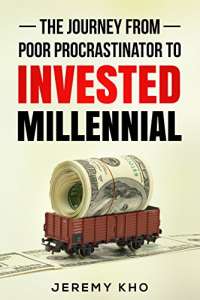
Author and entrepreneur Jeremy Kho advises his readers to start investing now for the bright future we would all like to have in The Journey from Poor Procrastinator to Invested Millennial.
Kho creates a clear picture of procrastinators – those who continue to delay making the moves that would garner them positive prospects for financial security. It might be a perfectionist who can’t get started on a project until everything is in place, or a “thrill-seeker” who likes the danger of waiting to pay a bill until the very last minute. Maybe it’s someone who feels too busy to make plans, or is too indecisive to set goals. Whatever the reason, procrastination now means not only amassing debt by paying late fees and penalties, but making it far less likely that there will be a comfortable niche in life waiting 20 or 30 years from now. In Kho’s list of descriptions, most any reader will see a little bit of themselves.
While aimed at Millennials, the book is applicable to anyone looking to organize finances and make more money. Kho suggests numerous strategies for altering your attitude towards investment, which is where the book is particularly effective. He provides a clear, simple illustration of “the time value of money,” with helpful real-world examples, which tend to hit home. For example, what if instead of rushing out and buying that new iPad, you used the $400 price of the iPad to make an investment? In 30 years, adjusting for inflation and basing the estimate on the lowest possible return, you would have $1,656 according to Kho’s formula.
In this way, the book acts as a kind of self-help manual, showing how people’s everyday financial habits are as ingrained as other kinds of bad behavior. This is especially true of millennials who came of age during an economic downturn, plus major technological advancement – a time when it’s both easier to spend a lot of money and to invest it. Millennials also have to contend with student loans in a way past generations did not, and in a world where economic uncertainty is common, long-term planning may be on the back burner. Kho implores readers to realize that one doesn’t have to have great wealth to be an investor. In some sense “it takes money to make money,” but not as much as you might think if you’re willing to take small steps.
This may be a tall order for people who have trouble paying the bills, let alone think about investing, so Kho structures his advice to people like himself – a millennial in his thirties – who have unique obstacles and opportunities not faced by investors in the past. But he is also unsparing in his assessment of Millennial’s potential bad habits as well – as Millennials tend not to plan, or see money as more about survival than advancement. But they have positives too: they value themselves, want to contribute to society (which requires having something to give) and are aware of the advantages of financial freedom.
All in all, The Journey from Poor Procrastinator to Invested Millennial is well-organized and informative, with tips that seem like they could actually be put into action. There is some awkward phrasing here and there, but Kho writes intelligently and logically overall, using subtle humor to make his points and emphasizing his own tendencies to procrastinate, giving the book a sense of both warmth and authority. With its exercises and practical steps for planning, this book is a solid work of business self-help that could very well help those who have thought little about financial planning.
Links
Author Site
Facebook
Twitter
Amazon
STAR RATING
Design
Content
Editing
Get an Editorial Review | Get Amazon Sales & Reviews | Get Edited | Get Beta Readers | Enter the SPR Book Awards | Other Marketing Services






















Leave A Comment